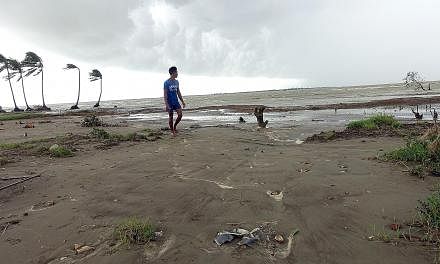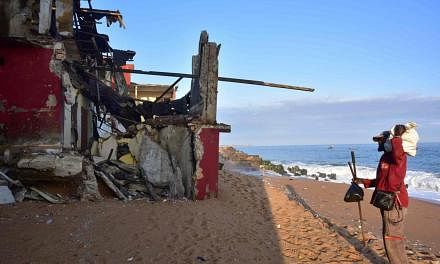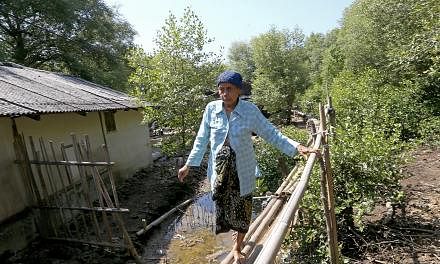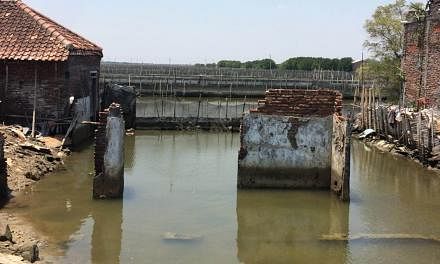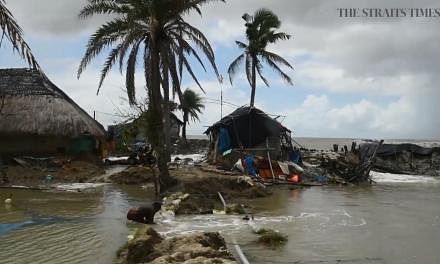Climate refugees: How extreme weather is forcing people to move
Battling rising sea, sinking land
In Indonesia, many people living along the coast fear the sea will one day claim their homes and their livelihoods. In some places, particularly the north coast of Java, it's already happening. With more than 17,000 islands and 95,000km of coastline, Indonesia is one of the nations most vulnerable to rising sea levels - and the crisis is set to get worse.
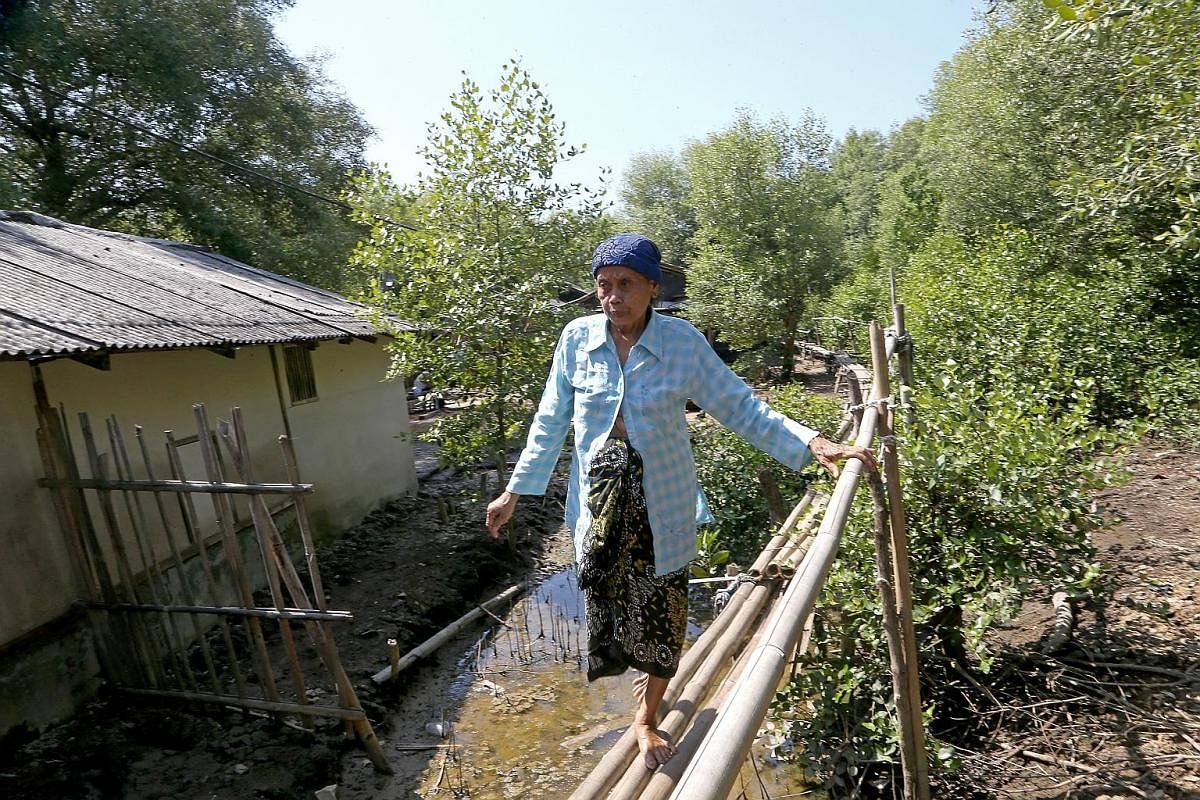
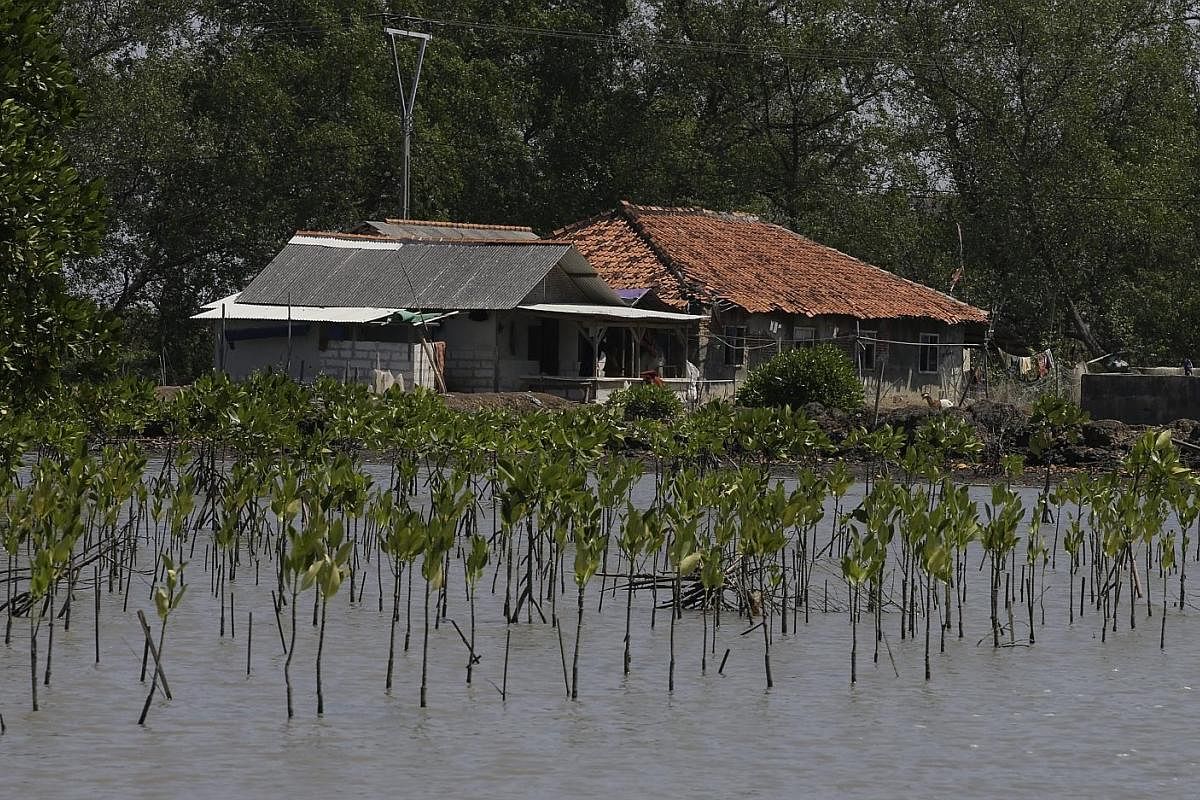

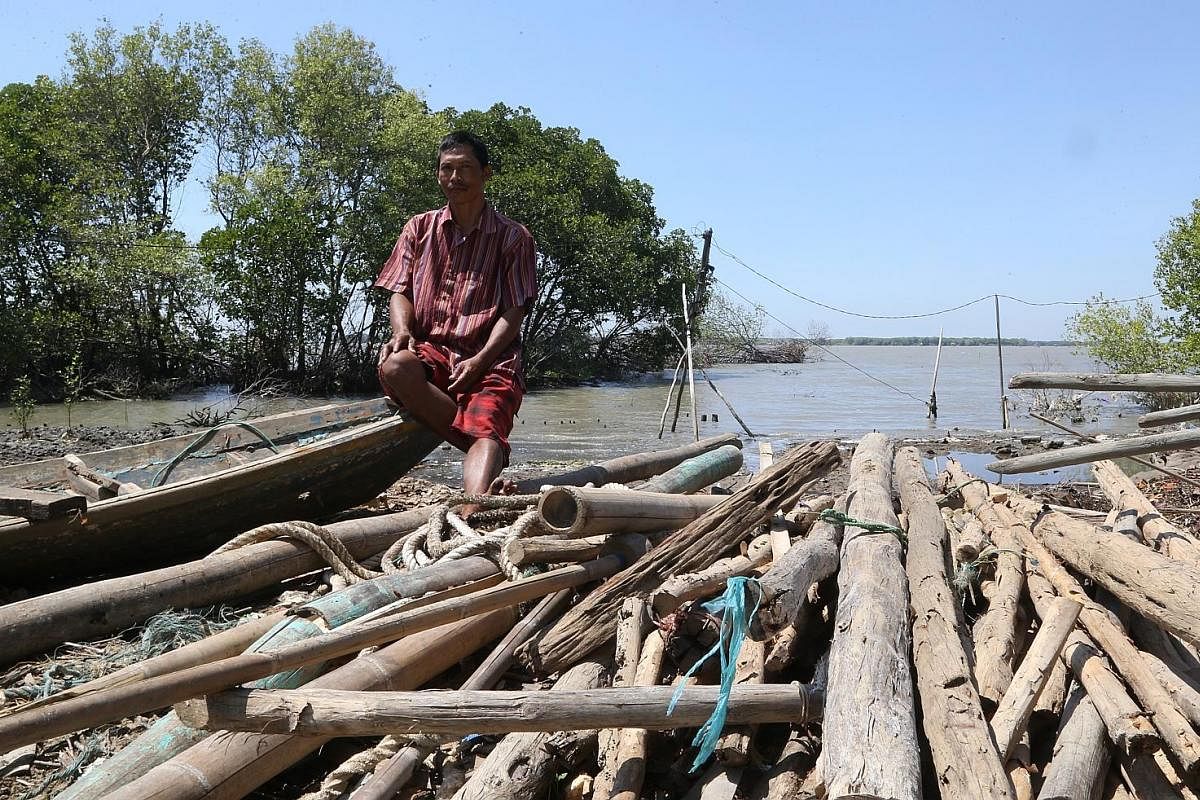
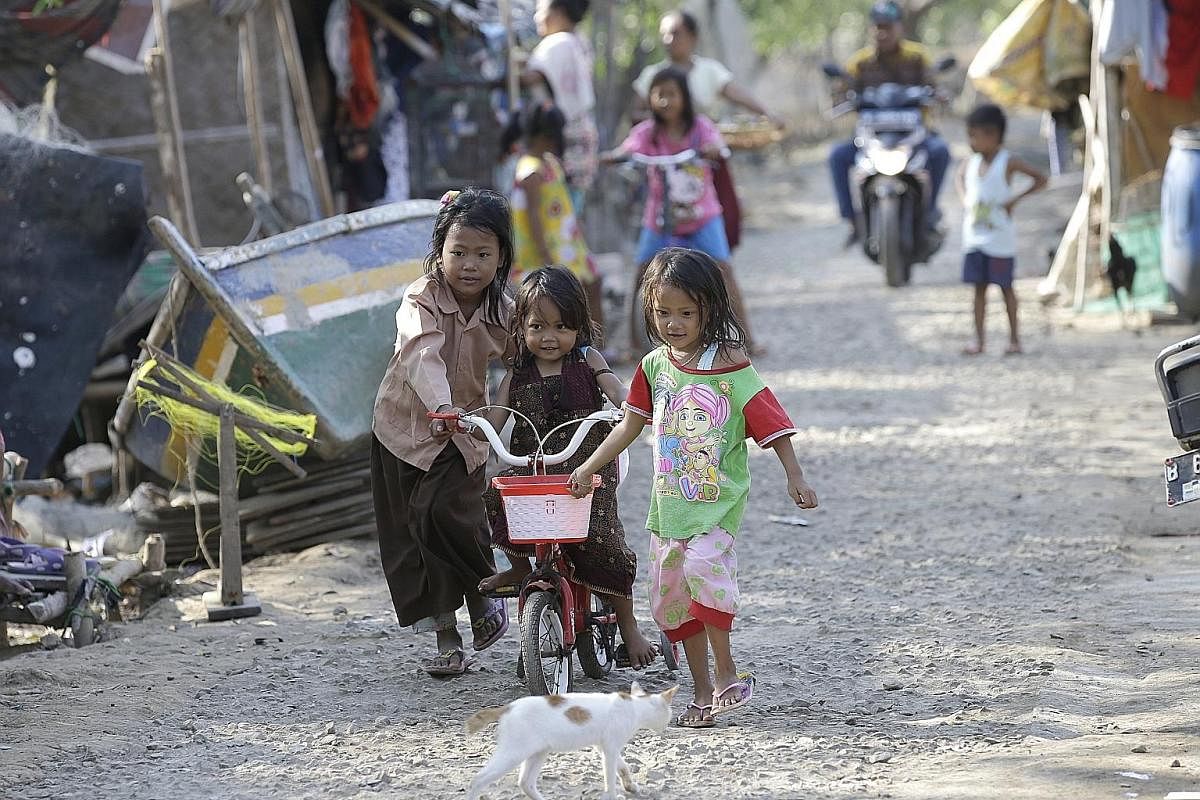
Only a crumbling wall of mud and firewood separates Indonesian housewife Karnah's house from the vast Java Sea. Whenever the monsoon season rolls by, she worries the waters will surge and swallow the family home of 30 years.
Many of her neighbours in Pantai Bahagia village, in Bekasi district just outside Jakarta, have fled to other towns in recent years. The rising seas caused by global warming have inundated their houses and fish ponds.
Ms Karnah wanted to flee, too, but she could not afford to rent a new house. Her family of seven now squeeze into the living room, the driest spot in the house.
"Every night, I worry about getting swept into the sea while asleep. My child is always in my arms," says the 31-year-old. "Once, a big tide drowned six of my chickens and soaked us to the bone. Everything got wet, mattresses, furniture, even my goats."
Global sea levels have been rising over the past century as oceans heat up and ice sheets and glaciers melt. But nowhere is the threat more evident than in South-east Asia, where densely populated and low-lying coastal plains are vulnerable to storm surges, coastal erosion and flooding.
Indonesia is a case in point. The United Nations' Intergovernmental Panel on Climate Change has predicted that average sea levels will rise between 24cm and 30cm by 2065. But Indonesia's environment and forestry ministry in its 2017 report estimated that the country could see a sharper increase exceeding 30cm in the next 40 years.
Even between 1993 and 2015, studies have shown that sea levels in Indonesia were rising 5.8mm each year, compared with the global average of 3.8mm a year.
Meanwhile, the world's biggest archipelago, with more than 17,000 islands and 95,000km of coastline, has already been hit hard by climate change.
The maritime affairs and fisheries ministry says Java's northern coast, on which Pantai Bahagia village sits, has suffered 745km of erosion. That is roughly four times Singapore's coastline.
"Indonesia is facing a huge challenge due to its vast geographical area," says Mr Andi Eka Sakya, head of the country's meteorology, climatology and geophysics agency.
Using as an example Cyclone Cempaka, which killed at least 41 people in Java last December, he said the interplay between the oceans and atmosphere had caused "unprecedented coastal hazards".
Indeed, the problem of rising seas is "very critical right now", assistant professor Aron Meltzner of Nanyang Technological University's Earth Observatory of Singapore tells The Sunday Times.
He says the worst part is that certain amounts of sea-level rise are already "locked in" long before they manifest, as the earth has already warmed, adding: "An analogy would be leaving an ice sculpture in a warm room - it won't all melt immediately, but you know it's going to melt."
Indonesia is bracing itself for the fallout as it tries to work out how much rising sea levels have contributed to land erosion and tidal flooding. "Of course the government is worried about this problem, but it requires accurate data on the cause of the problem before determining mitigation and prevention measures," says Ms Sri Tantri Arundhati, director for climate change adaptation at the environment and forestry ministry.
SINK OR SWIM
Residents of Pantai Bahagia, which means "happy beach" in Bahasa Indonesia, first noticed the sea levels rising in 1995, but it took 12 years before a nearby dam burst under pressure, unleashing torrents of water and inundating houses, shops, roads and farmlands, says village head Suryana.
When ST visited the village in April and July, the remains of wrecked houses and concrete pillars could be seen jutting out of the sea. A dark water line marked the walls of remaining houses and a knee-deep pool had collected in a school's front lawn. Close to the shore, mudskippers had made their homes in people's backyards.
Mr Suryana estimates 1,000ha of land, or a third of the village's size, is now under water. He adds that 400 of 2,170 families have been affected, of which 100 have moved farther inland or to nearby towns.
Former grocery store owner Muhammad Tamin, 66, was one of the first to leave. Fed up with the surging waters making roads impassable and damaging his goods, he sold his shophouse for next to nothing and moved out in 1997.
"A neighbour bought my house for 3 million rupiah (S$280). He needed to pay only the cost of the house, but the land it was built on was free," he says. But Mr Tamin has no regrets because a few years later, that "2ha land had turned into sea".
Another resident, 37-year-old farm hand Maska, laments: "The land kept disappearing." He had moved twice, in 2013 and 2016, to escape the swelling waters. Pointing to the horizon where the sky and sea joined, he says: "My original house was there."
Some have turned the rising waters into a business opportunity, offering boats for rent and motorcycle rides to flooded locations.
When the milkfish farm he worked for was swept away by the sea in 2012, Mr Casladi Toyib took to renting out boats to recreational pole fishermen. He receives 20 to 30 of them every weekend, charging 20,000 rupiah a person. "We were among hundreds who lost jobs at the time. Many had to leave the village or find something else to do. I had some savings to buy boats, but those without any money became jobless," the 62-year-old says.
GIANT SEA WALL AND MANGROVE BARRIERS
Not only are the seas around it rising, but Indonesia's land is also sinking and settling lower - a problem that some mega cities in South-east Asia also face, says Dr Meltzner.
"One thing we know for sure is that many metropolitan areas in South-east Asia - particularly parts of Jakarta, Manila, Bangkok, Ho Chi Minh City and Hanoi - are sinking fast due to groundwater withdrawal. This is leading to flooding in those regions with increasing frequency and increasing severity," he says.
In Indonesia, most urban regions, including the capital Jakarta, are located in coastal areas, Dr Anindya Wirasatriya, a researcher at University of Diponegoro (Undip), tells The Sunday Times.
They face soil subsidence - or seeing their land sink - as groundwater is extracted and buildings and infrastructure come up, he adds.
Another Undip researcher, Dr Muhammad Helmi, warns that this phenomenon will only accelerate as cities develop.
With 40 per cent of Jakarta now below sea level, top officials led by President Joko Widodo are counting on the building of a giant sea wall - better known as the "Great Garuda" - in the capital's north to hold back the pounding waves.
"It is estimated that all of North Jakarta will sink below sea level by 2030," Mr Joko told a Cabinet meeting two years ago.
As Indonesia fights to hold on to its land, it is banking on efforts by both the government and local communities, says Dr Denny Nugroho Sugianto, Undip's head of oceanography department.
The Indonesian government has built sea dikes, polders and retention ponds, he says. "And most of the coastal communities affected by tidal flooding and rising sea levels have raised the floors of houses and built houses on stilts."
In Pantai Bahagia, some villagers and non-governmental organisations have banded together to plant mangroves along the shoreline.
Dr Meltzner says mangroves act as a natural buffer by trapping sediment and dissipating waves during storms. He prefers them to breakwaters.
"As the sea level continues to rise, it is increasingly difficult and expensive to keep up using breakwaters, and if a breakwater fails, the consequences of flooding will be increasingly dire," he says.
But some villagers said mangrove trees need five to 10 years to mature. They want the government to build a temporary structure to hold back the waves in the meantime.
Because time is running out.
Join ST's Telegram channel and get the latest breaking news delivered to you.
A version of this article appeared in the print edition of The Sunday Times on November 04, 2018, with the headline Battling rising sea, sinking land. Subscribe

